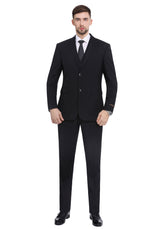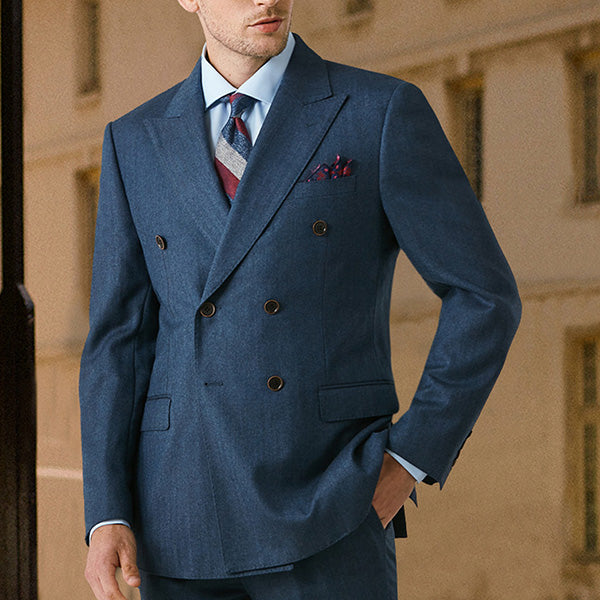How To Choose The Right Suit Trouser Fit?
We will look at how to achieve that all important perfect suit trouser fit. All too often gents are caught out with the fit of their trousers. Having done the hard work with the tailored jacket, there’s nothing worse than ill-fitting slacks. On the rack options tend to ignore the males with the need for wide leg trousers, leaving these people with little option but to visit the tailors.
Many retailers sell their suits as a set combination with something that is known as a six-inch drop, i.e. the suit trouser waistband on a suit will be six inches less than the chest measurement. This is all fair and well for those of us with the perfect proportions of men, but for a vast majority of people, this just won’t work. This leads to awkward compromises with gents uncomfortably squeezing themselves into trousers that are visibly too tight or wearing trousers which are far too loose and scream of teenage rebellion. This also has a detrimental effect on the longevity of your suit and ill-fitting slacks can be prone to splits, rips and unnecessary wear on the cloth.
So why compromise? Well, now there’s no need to! P&L men's Wear custom made trousers are made to fit each individual client to perfection.
Check out our key checkpoints for the perfect fit for your suit trousers.
1) Suit Trouser Waistband
The waistband should sit slightly higher than on a more casual pair of jeans or trousers. Whilst it’s a personal preference of each individual, generally sitting the waistband between the hips and navel is the right way to go. Those who wear their trousers higher might want to consider pleated trousers to accommodate the hips. The waistband should sit snug to the body but not so tight that it pulls and causes horizontal creases. If the trousers are too loose, the waistband will start to sag.
2) Seat
The seat of the trousers should sit nice and flat against the posterior. Too tight and horizontal lines will appear across the cloth increasing the risk of an embarrassing split trouser. Too loose and excess material will appear baggy at the base of the posterior and behind the thigh.
3) The Suit Trouser Leg
The trouser leg should generally be cut in accordance with the jacket i.e. a slimmer cut jacket should be matched with more tapered trousers. A more classic, traditional cut might be matched with straighter, wider trousers. Regardless what you choose, the suit trouser leg should drape smoothly with minimal creasing of the fabric. Too tight and the fabric will pull against the body and risk splitting or tearing; too loose and the excess will appear baggy and untidy.
4) Length
Trousers should sit neatly with no more than a single soft break at the front of the bottom of the suit trouser leg. This can be achieved through slightly different lengths depending on the cut of the trousers. A wider, more traditional cut can normally be taken down longer, whereas a tapered cut tends to be shortened so they just cover the top of the shoe as the circumference is not wide enough to cover the shoe resulting in excess length to bunch up untidily.







